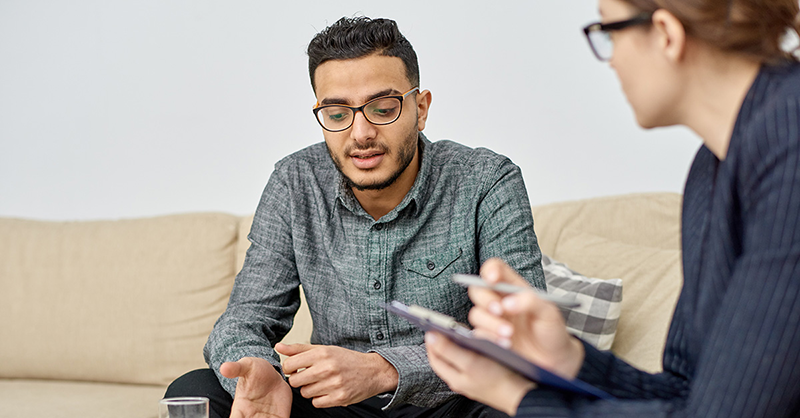
According to the United States Department of Veterans Affairs, about 6% of people have post-traumatic stress disorder (PTSD). But PTSD affects more than military members and veterans. Just one event can have a lifetime impact on a person’s overall wellbeing and their capacity to cope.
PTSD can occur in any person who experiences a traumatic or stressful situation, such as combat exposure, childhood physical abuse, sexual violence, physical assault, being threatened with a weapon or an accident. Signs and symptoms can last months, years or even a lifetime, affecting thoughts, emotions, behaviors and appearance. A person with PTSD can feel helpless — especially if their symptoms don’t subside.
But there’s hope for anyone diagnosed with PTSD. Learning a few coping techniques — in addition to seeking professional help — will build their resilience as they heal. These techniques can help you manage signs and symptoms — and possibly even prevent them.
Here are several ways a person can begin to heal, build resilience and nurture their mental wellbeing.
Find professional help.
The sooner a person seeks support and treatment for trauma, the better chance of recovery. Several types of treatments have been proven to help people with PTSD, including trauma-focused cognitive behavioral therapy (TF-CBT), eye movement desensitization reprocessing (EMDR) therapy, prolonged exposure (PE) therapy and dialectical behavioral therapy (DBT).
Determine triggers.
Sights, smells and sounds can remind a person about the traumatic event they experienced. Social gatherings, large crowds and small venues are common environments that can cause a person with PTSD to feel anxiety. By recognizing triggers, a person can avoid those situations until ready and mentally prepared.
Take positive action.
Getting involved in a project or cause is a great way to promote a healthy mindset. Being active as a volunteer or in a community project provides a sense of purpose and an optimistic perspective on life.
Avoid alcohol and other substances.
It may seem harmless to use alcohol or other substances to take the edge off, but repetitive use and reliance interfere with coping strategies. Alcohol and other substances can also negatively impact sleep.
Practice relaxation techniques.
Relaxation techniques, such as meditation, yoga, prayer, listening to calming music, and stretching and breathing strategies, help people with PTSD find inner peace and calmness. Many techniques — like breathing strategies — can also help a person cope with anxiety during a traumatic reaction.
Get moving.
Physical activity, such as exercising, hiking, bicycling and even working outside, releases endorphins and serotonin. Those “feel good” chemicals improve mood and disrupt negative thought patterns. Thirty minutes of moderate exercise has been shown to reduce anxiety and depression.
With support and perseverance, recovery from PTSD is possible — but it is a process that takes time and effort. Understanding that everyone’s recovery journey is different will help a person with PTSD have realistic expectations. If someone you know has been diagnosed with PTSD, offer support and encourage them to seek help from a professional.
Taking Mental Health First Aid will also help people understand how to listen and offer support and resources to someone experiencing a traumatic event. Find a course to and learn more about how you can help.
If you or someone you know is in danger, call 911, a local mental health crisis hotline or reach out to the 988 Suicide & Crisis Lifeline: Call or text 988, or chat 988lifeline.org.
Mental Health First Aid USA has trained more than 3 million people across the country to identify, understand and respond to signs and symptoms of mental health and substance use challenges. And we’re not done yet. MHFA wants everyone in America to have at least one Mental Health First Aider in their close circle of friends, family and peers. Every 1 in 15 people should be certified to identify, understand and respond to signs and symptoms of mental health and substance use challenges. Together, we will reach millions more and help others #BeThe1in15.
Sources
Mental Health First Aid. (2020). Mental Health First Aid USA. National Council for Behavioral Health d/b/a National Council for Mental Wellbeing.
Mental Health First Aid. (2022, June 27). Trauma and PTSD: What are they and how can I help? https://www.mentalhealthfirstaid.org/2022/06/trauma-and-ptsd-what-are-they-and-how-can-i-help/
Smith, M., Robinson, L., Segal, J. (n.d.) Post traumatic stress disorder (PTSD). HelpGuide.org. https://www.helpguide.org/articles/ptsd-trauma/ptsd-symptoms-self-help-treatment.htm
U.S. Department of Veterans Affairs. (n.d.) Coping with traumatic stress reactions. PTSD: National Center for PTSD. https://www.ptsd.va.gov/gethelp/coping_stress_reactions.asp